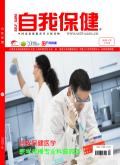CHARACTERISTICS OF POLIO SURVIVOR SELF-HELP ORGANIZATIONS
引用次数: 1
Abstract
While polio has been largely eliminated from the developed world, millions of survivors suffer not only the direct effects of this disease but many face new obstacles 20 to 40 years after “recovering” from the initial viral infection. With few of today’s doctors familiar with how polio affects the body, survivors have created self-help groups for social support and to disseminate the most recent information on what is commonly referred to as “post polio syndrome” or “post polio sequelae.” Post polio groups differ from other health focused groups like cancer and obesity, in that they do not have a new pool of potential members from which they can recruit. However, our survey of 83 polio self-help groups finds several similarities in organizational goals, structure, and services to other types of self-help organizations. The groups’ focus was primarily on providing members with health related information and social support. Leaders tended to be well educated professional females. Many post polio self-help groups had alliances with other polio groups and with medical clinics and hospitals. Polio reached epidemic proportions in the United States in the 1940s and early 1950s (Neus, 1999). Since then, however, in a review of major diseases, McKinlay and McKinlay (1990) reported polio to be one of the few diseases to have declined due to direct medical intervention. Indeed, Salk and Sabin were hailed as heroes for their work on polio vaccines. In the late 1980s work began to eradicate polio from the earth. Polio has been absent in the United States since 1979, from the小儿麻痹症幸存者自助组织的特点
虽然脊髓灰质炎已在发达国家基本消灭,但数百万幸存者不仅遭受这种疾病的直接影响,而且许多人在从最初的病毒感染中“恢复”20至40年后面临新的障碍。如今,很少有医生知道小儿麻痹症是如何影响身体的,幸存者创建了自助小组,以获得社会支持,并传播通常被称为“脊髓灰质炎后综合症”或“脊髓灰质炎后后遗症”的最新信息。小儿麻痹症后的小组不同于癌症和肥胖症等其他以健康为重点的小组,因为他们没有新的潜在成员库可供招募。然而,我们对83个小儿麻痹症自助组织的调查发现,在组织目标、结构和服务方面,与其他类型的自助组织有一些相似之处。这些团体的重点主要是向成员提供与健康有关的信息和社会支持。领导者往往是受过良好教育的职业女性。许多小儿麻痹症后自助团体与其他小儿麻痹症团体以及医疗诊所和医院结成联盟。脊髓灰质炎在20世纪40年代和50年代初在美国达到流行病的程度(news, 1999)。然而,从那时起,在对主要疾病的回顾中,McKinlay和McKinlay(1990)报告脊髓灰质炎是少数由于直接医疗干预而下降的疾病之一。事实上,索尔克和萨宾因在小儿麻痹症疫苗方面的工作而被誉为英雄。20世纪80年代末,从地球上根除小儿麻痹症的工作开始了。自1979年以来,脊髓灰质炎在美国一直没有出现
本文章由计算机程序翻译,如有差异,请以英文原文为准。
求助全文
约1分钟内获得全文
求助全文

 求助内容:
求助内容: 应助结果提醒方式:
应助结果提醒方式:


